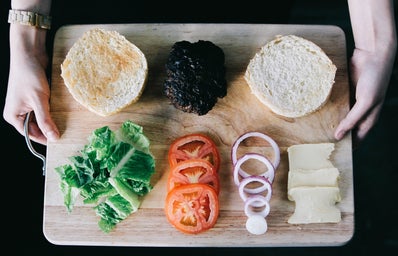The sight of chicken baking in the oven. The crunch of a fresh carrot julienned. The feel of crisp red, yellow and green bell peppers stacked in a bin at a farmer’s market. The smell of stew simmering on the stove. The taste of home cooked meals and the assorted sensory experiences of preparing for them are foreign to most college students.
Freshmen are required to enjoy the University’s meal plan, while many sophomores, juniors and seniors remain on campus where resources for culinary endeavors can be a challenge to acquire and use. Restaurants on Route 1 or the Stamp food court can be far more appealing than devoting precious time to cooking.
However, home cooked meals have significant benefits.
Cooking for oneself gives greater control over the ingredients used and proportions served. This leads to a healthier meal.
“People consume 50 percent more calories, fat and sodium when they eat out than when they cook at home,” wrote Liz Szabo of USA Today based on information from Rachel Brandeis of the American Dietetic Association. “Restaurant customers often miss out on fruits, vegetables, whole grains, beans and other vitamin-rich ‘powerhouse foods’ that may reduce the risk of cancer.”
In addition to health benefits, home cooked meals offer more variety. This is an aspect of cooking that University of Maryland junior biology major Kimmy Hodlin values.
“I get to eat whatever I want,” noted Hodlin. “I also eat more of a variety of food than I did when I ate at the diner, and it’s healthier.”
Hodlin also enjoys a social perk of cooking. Once a week one of the four roommates living in Hodlin’s Commons apartment cooks a dinner that everyone sits down to eat together, family-style. It’s a weekly time of fellowship and delicious, nutritious food.
“I made homemade mac and cheese for me and my roommates. I followed a recipe and made the cheese sauce and then baked that with the pasta,” remarked Hodlin. “Overall, it was a huge success. Both my roommates and I loved it.”
Cooking on campus has notable pros, but there are definitely a few cons. Resources like groceries and space can be difficult to find and utilize. First, if a student lives in a traditional residence hall there is a single kitchen for the entire building. A communal kitchen requires students to share the space and keep it clean. Labeling ingredients stored in the public fridge is important, and leaving dirty dishes in the shared sink is unacceptable.
Second, if a student is without a car of his or her own then grocery shopping is limited. A student without a car can only travel to stores and markets within walking distance or on the route of a public transportation line— unless a friend is willing to provide a ride. But, there are several campus shops and a farmer’s market to consider.
Campus stores like the North Campus Snack N’ Shop and South Campus Commons Shop take Terp Bucks in addition to Terrapin Express and the standard cash or credit. But, prices are high and variety is minimal. Hodlin wished that campus officials would “reduce the prices on food at the campus stores.”
From May 2 to November 14, 2012 The Farmer’s Market at Maryland had its inaugural season. Located on Campus Drive, in front of Cole Fieldhouse, the market provided students with freshly baked breads, seasonal fruits and veggies and even an impressive selection of meats, among other local goods. Students bought apple cider, spicy jalapenos and growing lavender plants throughout the season. In May 2013 the market will return, according to Wellness at Maryland.
With campus resources in mind and tips on sharing communal cooking spaces, students living on campus should face the challenge of cooking more often. The sight, sound, touch, smell and taste of a home cooked meal are hard to resist.
====
VIDEO: A group of University of Maryland foreign exchange students from China enjoy cooking traditional Chinese dumplings together in a communal kitchen located in an on-campus residence hall.

